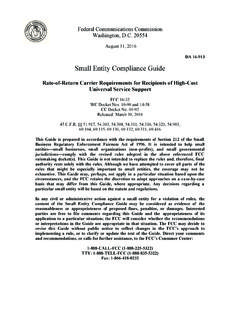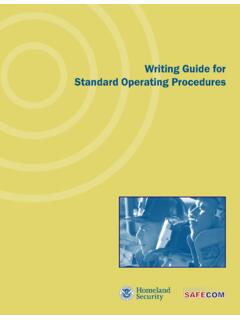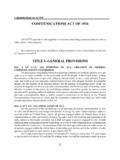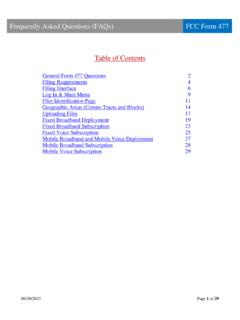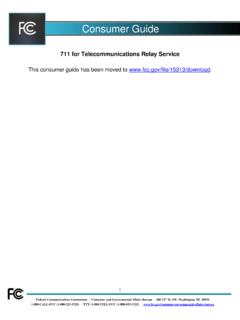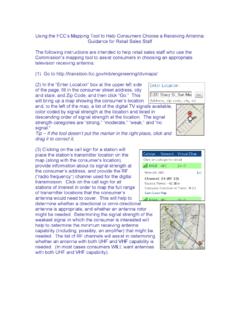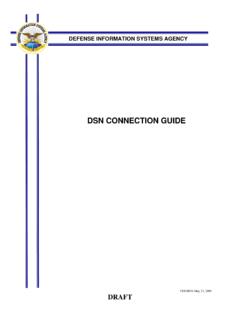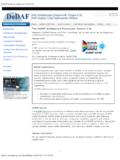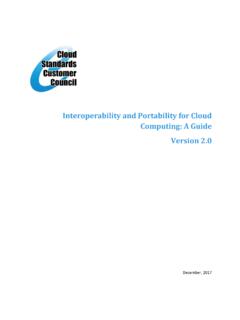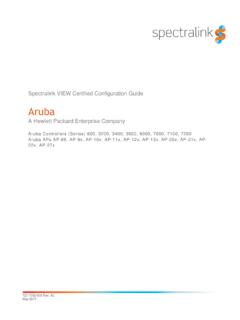Transcription of Writing Guide for Standard Operating Procedures
1 Writing Guide for Standard Operating ProceduresTable of Contents Table of Contents Table of ContentsOverv ew and Background ..1 Purpose ..2 How To Use Th s Tool ..2 Sect on 1: on 2: on 3: on 4: on 5: on 6: actIvatIon,.transfer,. on 6: actIvatIon,.transfer,. (cont.)..9 Sect on 6: actIvatIon,.transfer,. (cont.)..10 Sect on 6: actIvatIon,.transfer,. (cont.)..11 Sect on 7: on 8: on 9: on 10: on 11: on ..15 Sample Append x 1 ..16 Sample Append x 2 ..20 Sample Append x 3 ..21 Sample Append x 4 ..21 Sample Append x 5 ..22 Figure 1 Commun cat ons Interoperab l ty Cont nuum1Wr t ng Gu de for Standard Operat ng ProceduresWith its Federal partners, SAFECOM provides research, development, testing and evaluation, guidance, tools, and templates on communications-related issues to local, tribal, state, and Federal emergency response agencies.
2 A communications program of the Department of Homeland Security s Office for interoperability and Compatibility, SAFECOM is managed by the Science and Technology Directorate. SAFECOM helps the public safety community and local, tribal, state, and federal policy makers address critical elements for success as they plan and implement interoperability solutions. The program is working with the public safety community to encourage a shift from a technology-centric approach to a comprehensive focus on improving interoperability . Although technology is critical for improving interoperability , other elements, including governance, Standard Operating Procedures , training and exercises, and usage of interoperable communications, play a vital role. To assist this shift to a comprehensive focus on interoperability , SAFECOM worked with public safety practitioners and local communities to develop a comprehensive framework called the interoperability Continuum (see Figure 1).
3 SAFECOM developed the interoperability Continuum in accordance with its locally driven philosophy and its practical experience in working with communities across the Nation. The Continuum visually depicts the core facets of interoperability according to the stated needs and challenges of the public safety community and aids the efforts of public safety practitioners and policy makers to improve of SAFECOM s goals is to provide the public safety community with tools to improve all aspects of the Continuum. This tool focuses on the Standard Operating Procedures (SOP) element of the Continuum, specifically to help communities that are interested in establishing Standard Operating Procedures for ew and Background2 PurposeHow To Use Th s ToolThis Guide s purpose is to assist communities that want to establish SOPs.
4 SOPs are formal written guidelines or instructions for incident response. SOPs typically have both operational and technical components and enable emergency responders to act in a coordinated fashion across disciplines in the event of an emergency. Clear and effective SOPs are essential in the development and deployment of any solution. This Guide is intended to help communities write SOPs. The headings of this Guide are consistent with recommended headings for each part of an SOP. Each section begins with a brief introduction of its purpose and then poses questions to consider to Guide content. Sample paragraphs are included for reference; however, it is important to note that the sample paragraphs were geared for illustration purposes toward a specific SOP example. The example used in this document is a city s SOP for the use of an intra-jurisdictional interoperability channel.
5 Intra-jurisdictional refers to multiple disciplines within one jurisdiction. The sample paragraphs are there to provide examples and guidance only and should NOT be taken document does not address every issue that jurisdictions, regions, or states may face when seeking to establish an SOP. SOPs should be customized to the capability or resource for which they are established and should consider unique characteristics of specific states or participating on 1: IntroductIonThe introduction section of the SOP describes the recognized need for Procedures and lists agencies that will share the Procedures . The introduction can also serve to specify the capability or resource in which the Procedures are being established and provide reasons why it is important to establish such Procedures . [Insert name of city here] public safety agencies recognize the need for interagency communication, interoperability , and cooperation.
6 [Insert name of city here] police, fire response, and Emergency Medical Services (EMS) have well-established interoperability capabilities and mutual aid agreements in place. While these plans and agreements formally extend beyond jurisdictions, they tend to remain intra-discipline in practice. Today s public safety realities highlight the need for agencies to work together to establish communications interoperability and mutual aid plans not only across traditional jurisdictional boundaries but across disciplines as well. To remedy the lack of ability to communicate among disciplines, the [insert name of city here] public safety agencies, [insert agency names here], as well as the public service agencies, [insert agency names], have worked cooperatively to develop an intra-jurisdictional interoperability solution.
7 This solution establishes dedicated radio channels with Procedures that are accessible on communication equipment used by key public service officials, public safety officials, and public/private service To what capability does this SOP apply?k What is the recognized need?l Are any established agreements already in place among emergency responders?m Who will be using the SOP?n Why is this concern being addressed??Quest onsto cons der:4 Sect on 2: PurPoseThe pupose section clarifies the principal objective of the capability or resource that is the subject of the SOP. The purpose section also briefly describes the purpose of the SOPs with respect to the capability or resource and may include information as to authority, use, responsibility, What is the principal objective of the interoperability channel?
8 K What is the principal objective of the SOP (delineation of authority, roles, and Procedures )?l What are the other interoperable communications alternatives to the interoperability channel? ?Quest onsto cons der:The principal objective of the intra-jurisdictional interoperability channel is to provide key decision makers from various agencies a real-time means of direct voice communications. Not only will this enhance the efficiency of a multi-agency response, it will save lives by quickly disseminating critical information to participating emergency responder agencies at the scene of a significant incident anywhere in the city. The purpose of this SOP is to delineate the authority, roles, and Procedures for city agency supervisory personnel to use the intra-jurisdictional interoperability channel. These personnel are outlined in Figure 2 (see page 6).
9 This SOP also recognizes a number of interoperable communications alternatives to the intra-jurisdictional interoperability channel, which allow the [insert city name here] public safety and public service personnel to communicate during critical on 3: scoPeThe scope section lists the agencies and jurisdictions that will participate in the Procedures and may describe their relationship. This section can also provide details on the end users for whom the new capability is being provided, such as level of command, level of government, voice and/or data, Which agencies are to be included in this SOP? k What level of authority will be included in this SOP (command or tactical level)?l When will this channel be used? For critical incidents? Planned events? Day-to-day? At the discretion of the mayor?
10 The scope of this SOP includes [insert name of city here] public safety agencies including [insert name of city here] police, fire, and EMS as well as [insert name of city here] public service agencies including [insert public service agency names here]. These agencies have worked cooperatively to develop the intra-jurisdictional interoperability channel and Standard Operating Procedures , which will be used at the agency command level during critical incidents or at the discretion of the mayor. In the future, other agencies may enter into a Memorandum of Understanding (MOU) with the city for use of the channel and will agree to operate according to the Procedures outlined in this onsto cons der:SAmPleCOnTenT6 Sect on 4: graphical depiction of the agencies involved in the communications structure can help map out the flow of information and help set the foundation for Procedures .

